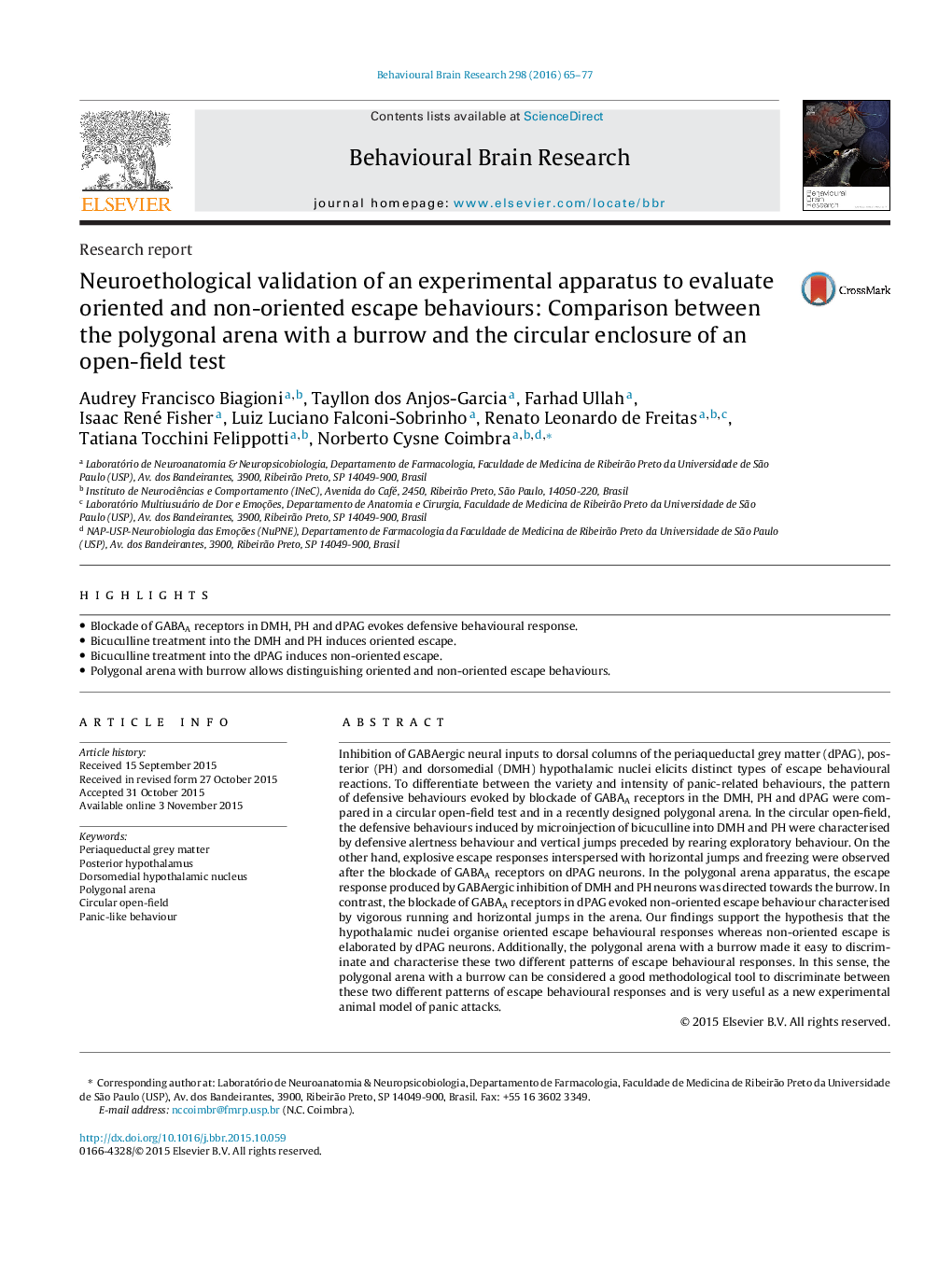| Article ID | Journal | Published Year | Pages | File Type |
|---|---|---|---|---|
| 6256262 | Behavioural Brain Research | 2016 | 13 Pages |
â¢Blockade of GABAA receptors in DMH, PH and dPAG evokes defensive behavioural response.â¢Bicuculline treatment into the DMH and PH induces oriented escape.â¢Bicuculline treatment into the dPAG induces non-oriented escape.â¢Polygonal arena with burrow allows distinguishing oriented and non-oriented escape behaviours.
Inhibition of GABAergic neural inputs to dorsal columns of the periaqueductal grey matter (dPAG), posterior (PH) and dorsomedial (DMH) hypothalamic nuclei elicits distinct types of escape behavioural reactions. To differentiate between the variety and intensity of panic-related behaviours, the pattern of defensive behaviours evoked by blockade of GABAA receptors in the DMH, PH and dPAG were compared in a circular open-field test and in a recently designed polygonal arena. In the circular open-field, the defensive behaviours induced by microinjection of bicuculline into DMH and PH were characterised by defensive alertness behaviour and vertical jumps preceded by rearing exploratory behaviour. On the other hand, explosive escape responses interspersed with horizontal jumps and freezing were observed after the blockade of GABAA receptors on dPAG neurons. In the polygonal arena apparatus, the escape response produced by GABAergic inhibition of DMH and PH neurons was directed towards the burrow. In contrast, the blockade of GABAA receptors in dPAG evoked non-oriented escape behaviour characterised by vigorous running and horizontal jumps in the arena. Our findings support the hypothesis that the hypothalamic nuclei organise oriented escape behavioural responses whereas non-oriented escape is elaborated by dPAG neurons. Additionally, the polygonal arena with a burrow made it easy to discriminate and characterise these two different patterns of escape behavioural responses. In this sense, the polygonal arena with a burrow can be considered a good methodological tool to discriminate between these two different patterns of escape behavioural responses and is very useful as a new experimental animal model of panic attacks.
